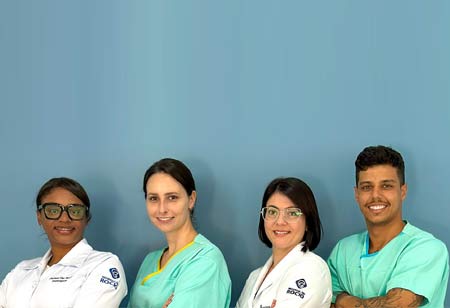Thank you for Subscribing to Healthcare Business Review Weekly Brief

Early Mobilization Protocol in Critical Patients: Experience of Hospital do Rocio
Healthcare Business Review
Abstract
This study describes the implementation and outcomes of an early mobilization protocol for critical patients in the Intensive Care Unit (ICU) of Hospital do Rocio, located in Paraná, Brazil. The aim is to mobilize 100 percent of patients, from those who are sedated to those with better functionality, through functional activities that promote cognitive, psychological, and physical benefits. The results indicate significant improvements in quality of life, functionality, and patient prognosis.
Introduction
Early mobilization has gained prominence as an effective intervention for the recovery of patients admitted to ICUs. Studies show that prolonged immobility contributes to muscle mass loss, increased hospitalization time, and a worse overall prognosis. This article details the experience of Hospital do Rocio in implementing an early mobilization protocol, highlighting its steps, challenges, and benefits.
Methodology
The protocol was implemented over several months and includes:
● Individualized assessment: Each patient is evaluated to determine the appropriate activity level.
● Progressive activities: Exercises in bed, at the bedside, and outside the bed.
Patients with better functionality participate in circuits with equipment such as dumbbells, cones, and bars.
● Outdoor environment: Patients are taken to external areas of the hospital for natural light exposure, reducing delirium and improving cognition.
The early mobilization protocol at Hospital do Rocio not only accelerated physical recovery but also fostered significant psychological benefits, with patients reporting increased functionality and improved well-being
Results
Practical results include:
● Functional improvement: Patients reported greater movement capacity and increased functionality throughout the treatment.
● Positive psychological impacts: Interaction with the team and activities in external environments improved patients' confidence and emotional well-being.
● Adherence: Protocol acceptance was high, with patients eager for physiotherapy as an essential part of their recovery.
Discussion
Early mobilization proved effective not only in physical recovery but also in supporting the mental health of patients. Natural light exposure and activities in external areas represent unique aspects of the implemented protocol. Compared to traditional physiotherapy, the protocol resulted in less muscle mass loss and faster functional recovery.
Conclusion
The early mobilization protocol implemented at Hospital do Rocio is pioneering in Paraná and shows promising results. It significantly improved the functionality and quality of life of critical patients, standing out as an effective and innovative practice in ICU care. Future studies can quantify the benefits more comprehensively and contribute to expanding this approach to other contexts.









